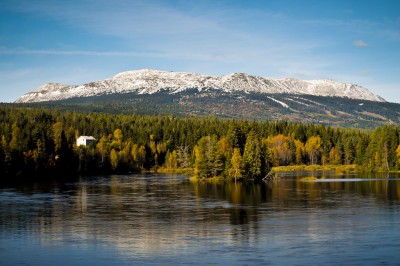Thousands of Norwegians are spending this week of annual høstferie (autumn school holidays) at their cabins (hytter) in the mountains, but many are no longer roughing it. Researchers claim Norwegians have lost their penchant for the simple life and now want all the comforts of home.

It wasn’t very long ago that Norwegians headed for their hytter to journey back to a time when homes had no electricity, running water or even road access. They relished having to carry water from the local stream, light the fireplace for warmth and cook on wood-burning stoves or, in a concession to more modern utilities, use propane. Their hytter were small, maybe 40 square meters (400 square feet), and they had to go outdoors to get to the toilet (utedo). With no road access, owners often had to hike to their hytter, but were rewarded with the peace and quiet of the great outdoors, where they spent most of their time while on hytte holiday.
A recent report from research firm Vestlandsforskning, carried out in cooperation with the Norwegian University of Science and Technology (NTNU) in Trondheim and state consumer research agency SIFO, shows just how much this has changed.

In 1983, according to the report, newly built Norwegian homes were 170 percent larger, on average, than hytter built the same year. By 2010, the difference had declined to 29 percent. The average size of holiday homes has increased by 10 square meters (100 square feet) just since 2004. Electricity has become standard. While electricity consumption within Norway’s residential sector rose by 2 percent between 1994 and 2001, it rose 58 percent in the recreational housing sector.
“Hytter have become our second homes,” Carlo Aal of Vestlandsforskning told newspaper Aftenposten. He thinks it’s now a myth that Norwegians yearn for the simple life. “They want comfort,” he claims, pointing to the luxurious bathrooms, saunas and fully equipped kitchens at many large, new hytter. Some have nicer hytter than homes, and they even tend to spend much of their holiday indoors, not out hiking or skiing.
Aal and his colleagues discovered many a paradox while doing their research. “Folks still express a need for the simple hytte life,” he said. “It’s fascinating, because while the old-fashioned, simple hytte life involved spartan conditions and low consumption, modern hytte life involves steady increases in consumption and energy use that lead to environmental problems.”
Newspaper Dagsavisen recently reported that there are around 400,000 hytter in Norway at present, and roughly half the population has access to a hytte. Nearly 40,000 Norwegians have concrete plans to buy a hytte in the mountains, and rising affluence means many will want them to be well-equipped.
Vestlandsforskning proposes several measures to improve environmental friendliness and reduce climate concerns for the many new hytte developments rising around Norway. Local politicians should reduce the number of parking places allowed and tie developments to public transportation systems, to discourage driving, and limit the size of hytter to reduce consumption. In the years after World War II, for example, when rationing still existed, hytter were restricted to 40 square meters because of the lack of building materials available and need for housing in the cities.
Research done at the University of Oslo has shown that many Norwegians are irritated by large hytte developments that they fear are urbanizing the mountains. And purists can still be found. One owner of a small, traditional hytte at Sjusjøen, not far from Lillehammer, told Norwegian Broadcasting (NRK) recently that he was objecting to local plans to bring electricity into his area. He preferred the simple life, and thought his neighbours should, too.
Views and News from Norway/Nina Berglund
Join our Readers’ Forum or comment below.
To support our news service, please click the “Donate” button now.

